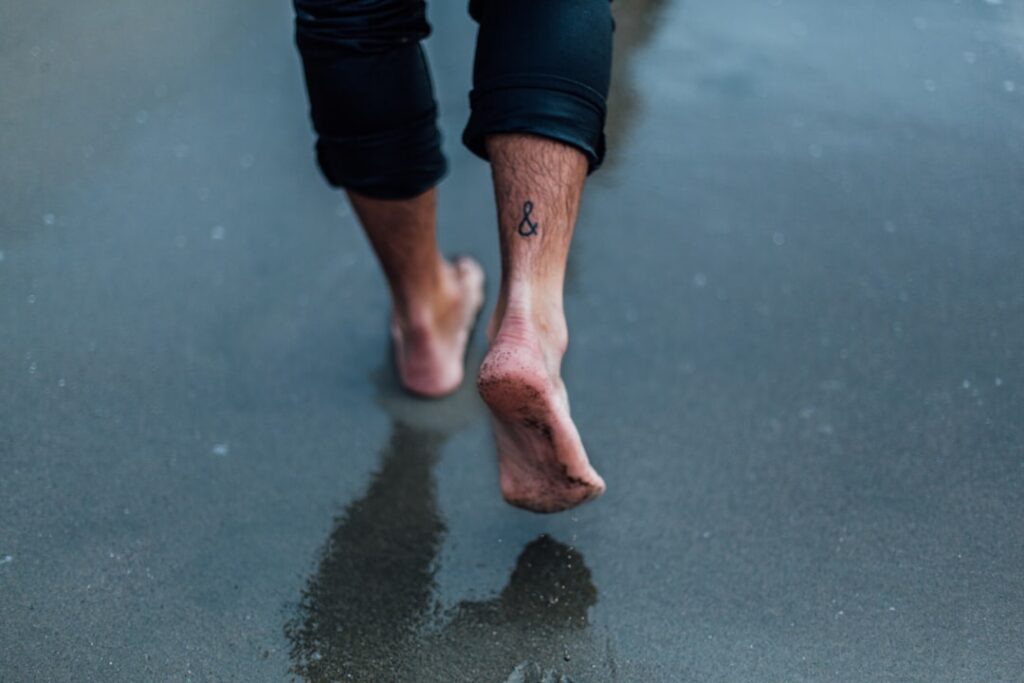Ojo de Pescado, also known as a plantar wart, is a common skin condition that affects the soles of the feet. It is caused by the human papillomavirus (HPV) and appears as a small, rough, and grainy growth on the bottom of the foot. The name “Ojo de Pescado” translates to “fish eye” in Spanish, which accurately describes the appearance of the wart. These warts can be painful, especially when walking or standing, and can make it uncomfortable to wear shoes. Ojo de Pescado can occur in anyone, but it is most common in children and young adults. It is important to seek treatment for Ojo de Pescado to prevent it from spreading and causing further discomfort.
Ojo de Pescado is caused by the human papillomavirus (HPV), which enters the body through small cuts or breaks in the skin. The virus thrives in warm, moist environments such as locker rooms, swimming pools, and communal showers, making these places common areas for contracting the virus. Once the virus enters the body, it can take weeks or even months for the wart to appear. Ojo de Pescado can also be spread from person to person through direct contact or by sharing personal items such as towels or shoes. It is important to practice good foot hygiene and avoid walking barefoot in public areas to reduce the risk of contracting Ojo de Pescado.
Causes of Ojo de Pescado in the Foot
Ojo de Pescado, or plantar warts, are caused by the human papillomavirus (HPV). This virus enters the body through small cuts or breaks in the skin, often on the soles of the feet. Once inside the body, the virus can lay dormant for weeks or even months before causing a wart to appear. The warm, moist environments of communal showers, swimming pools, and locker rooms provide the perfect breeding ground for the virus, making these places common areas for contracting Ojo de Pescado. Additionally, walking barefoot in these areas increases the risk of coming into contact with the virus.
Another common cause of Ojo de Pescado is direct contact with an infected person or sharing personal items such as towels or shoes. The virus can be easily spread from person to person, especially in environments where people are in close proximity to each other. It is important to practice good foot hygiene and avoid sharing personal items to reduce the risk of contracting Ojo de Pescado. Additionally, individuals with weakened immune systems are more susceptible to developing plantar warts, as their bodies may have a harder time fighting off the HPV virus. Taking precautions such as wearing flip-flops in communal areas and practicing good foot hygiene can help reduce the risk of developing Ojo de Pescado.
Symptoms and Diagnosis of Ojo de Pescado in the Foot
The symptoms of Ojo de Pescado, or plantar warts, can vary from person to person. They often appear as small, rough, and grainy growths on the bottom of the foot, with tiny black dots in the center. These warts can be painful, especially when walking or standing, and may feel like there is a stone in your shoe. In some cases, multiple warts may cluster together, forming a larger, mosaic-like pattern on the sole of the foot. If left untreated, Ojo de Pescado can grow larger and become more painful over time.
Diagnosing Ojo de Pescado is usually straightforward and can be done through a physical examination by a healthcare professional. In some cases, a doctor may need to shave off a small portion of the wart to examine it under a microscope to confirm the diagnosis. It is important to seek medical attention if you suspect you have Ojo de Pescado, as self-diagnosis and treatment can lead to further complications.
Treatment Options for Ojo de Pescado in the Foot
| Treatment Option | Description |
|---|---|
| Salicylic Acid | Topical treatment to soften the affected area and promote peeling of the skin. |
| Cryotherapy | Freezing the lesion with liquid nitrogen to destroy the affected tissue. |
| Debridement | Removal of the lesion using a scalpel or other sharp instrument. |
| Topical Antifungal Cream | Application of antifungal cream to treat the underlying fungal infection. |
There are several treatment options available for Ojo de Pescado, ranging from over-the-counter remedies to medical procedures performed by a healthcare professional. Over-the-counter treatments such as salicylic acid patches or gels can be effective in treating mild cases of plantar warts. These treatments work by gradually removing layers of the wart over time. It is important to follow the instructions carefully and be patient, as it may take several weeks for the wart to completely disappear.
For more stubborn or painful warts, a healthcare professional may recommend more aggressive treatments such as cryotherapy, which involves freezing the wart with liquid nitrogen to destroy the affected tissue. Other options include laser therapy, which uses focused light to destroy the wart, or surgical removal for larger or more resistant warts. In some cases, a combination of treatments may be necessary to fully eliminate the wart.
It is important to seek medical advice before attempting any treatment for Ojo de Pescado, as self-treatment can lead to further complications and may not effectively remove the wart.
Prevention of Ojo de Pescado in the Foot
Preventing Ojo de Pescado involves practicing good foot hygiene and taking precautions to avoid coming into contact with the human papillomavirus (HPV). This includes wearing flip-flops or water shoes in communal areas such as swimming pools, locker rooms, and showers to reduce the risk of exposure to the virus. Additionally, it is important to avoid walking barefoot in these areas and to thoroughly dry your feet after being in a moist environment.
Sharing personal items such as towels or shoes should also be avoided to prevent the spread of HPV. If you have a plantar wart, it is important to keep it covered with a bandage to reduce the risk of spreading the virus to others. Practicing good foot hygiene, such as keeping your feet clean and dry, can also help reduce the risk of developing Ojo de Pescado.
For individuals with weakened immune systems, taking extra precautions such as wearing socks and shoes in communal areas and avoiding direct contact with infected individuals can help reduce the risk of developing plantar warts.
Complications of Untreated Ojo de Pescado in the Foot

If left untreated, Ojo de Pescado can grow larger and become more painful over time. The pressure from walking or standing on a plantar wart can cause it to grow inward beneath a thick layer of skin, leading to increased discomfort and pain. In some cases, multiple warts may cluster together, forming a larger, mosaic-like pattern on the sole of the foot.
Additionally, untreated plantar warts can spread to other areas of the foot or even to other people through direct contact or sharing personal items. This can lead to further discomfort and inconvenience for the affected individual and increase the risk of spreading HPV to others.
In rare cases, Ojo de Pescado may cause complications such as infection if the skin becomes broken or damaged from excessive pressure or picking at the wart. It is important to seek medical attention if you suspect you have a plantar wart to prevent further complications and discomfort.
When to Seek Medical Attention for Ojo de Pescado in the Foot
It is important to seek medical attention if you suspect you have Ojo de Pescado, especially if over-the-counter treatments have been ineffective or if the wart is causing significant pain or discomfort. A healthcare professional can provide an accurate diagnosis and recommend appropriate treatment options based on the severity of your condition.
Additionally, individuals with weakened immune systems should seek medical advice if they suspect they have a plantar wart, as their bodies may have a harder time fighting off the HPV virus. Seeking prompt medical attention can help prevent further complications and discomfort associated with Ojo de Pescado.
If you have diabetes or poor circulation, it is especially important to seek medical advice for any foot condition, including plantar warts. These conditions can increase the risk of developing complications from Ojo de Pescado and may require specialized care from a healthcare professional.
In conclusion, Ojo de Pescado is a common skin condition that affects the soles of the feet and is caused by the human papillomavirus (HPV). It can be painful and uncomfortable, especially when walking or standing, and may require medical treatment to fully eliminate. Practicing good foot hygiene and taking precautions to avoid coming into contact with HPV can help reduce the risk of developing plantar warts. Seeking prompt medical attention if you suspect you have Ojo de Pescado is important to prevent further complications and discomfort associated with this condition.
Looking for more information on foot conditions like ojo de pescado en el pie? Check out this insightful article on foot health and wellness at Future Driven Mom. Learn about effective treatments, prevention tips, and how to maintain healthy feet for an active lifestyle. Whether you’re dealing with ojo de pescado or other foot issues, this article provides valuable insights to keep your feet in top condition.
FAQs
What is ojo de pescado en el pie?
Ojo de pescado, also known as a plantar wart, is a common viral infection that affects the skin on the bottom of the foot. It is characterized by a small, rough, and grainy growth that typically appears on weight-bearing areas of the foot.
What causes ojo de pescado en el pie?
Ojo de pescado is caused by the human papillomavirus (HPV) entering the body through small cuts or breaks in the skin. The virus thrives in warm, moist environments such as locker rooms, swimming pools, and communal showers.
What are the symptoms of ojo de pescado en el pie?
The symptoms of ojo de pescado include a small, fleshy, grainy growth on the bottom of the foot, tenderness or pain when walking or standing, and black pinpoints, which are often called “wart seeds.”
How is ojo de pescado en el pie treated?
Treatment for ojo de pescado en el pie may include over-the-counter medications, prescription medications, cryotherapy, laser treatment, or surgical removal. It is important to consult a healthcare professional for proper diagnosis and treatment.
How can ojo de pescado en el pie be prevented?
To prevent ojo de pescado en el pie, it is important to keep feet clean and dry, avoid walking barefoot in public areas, wear flip-flops or sandals in communal showers and locker rooms, and avoid sharing personal items such as socks and shoes.





